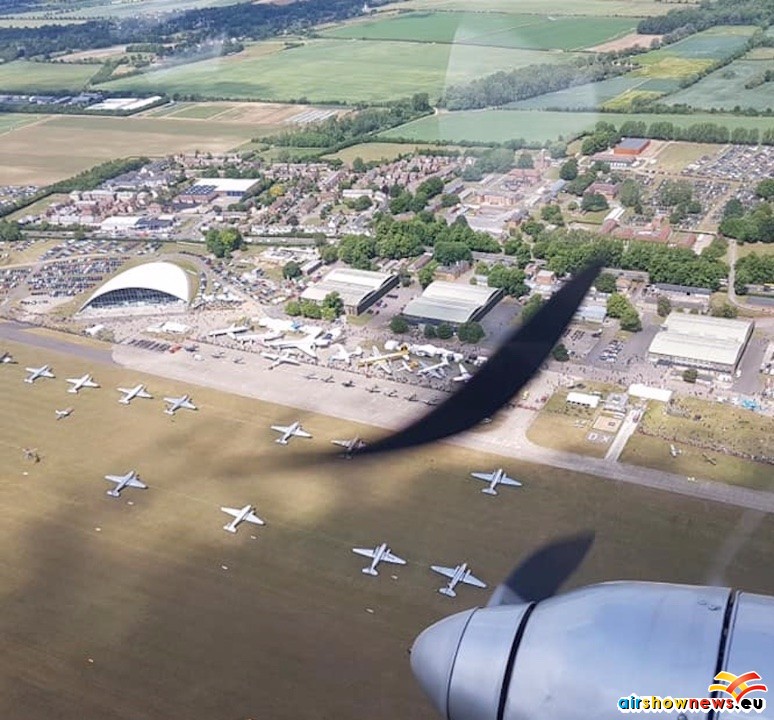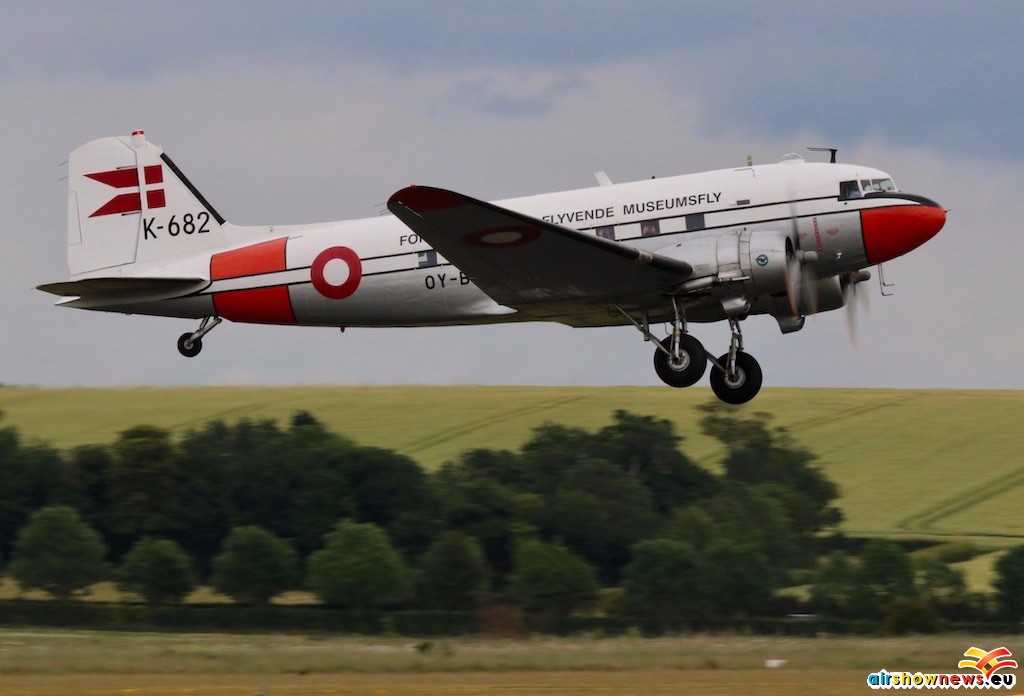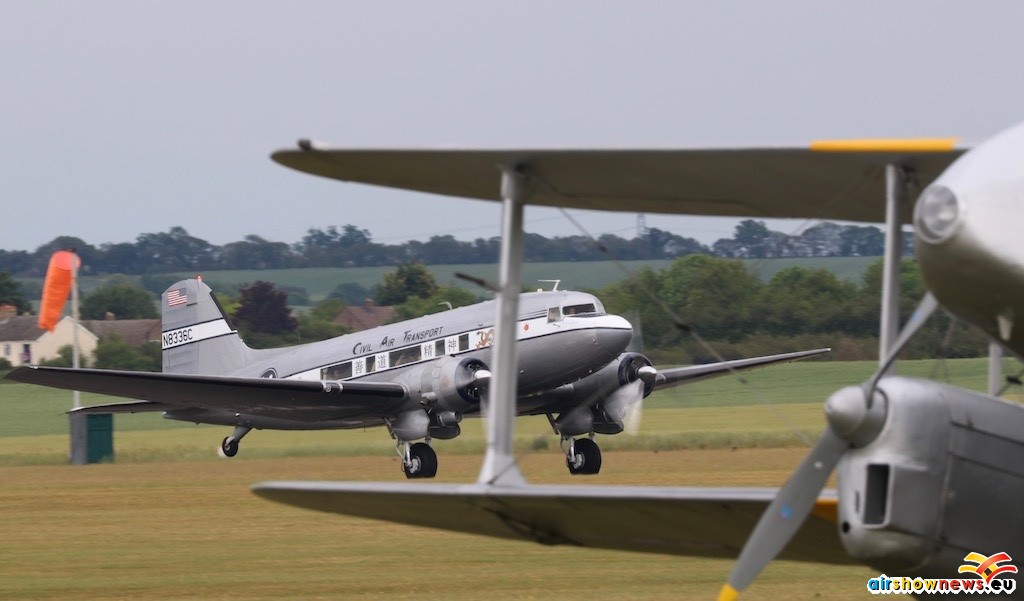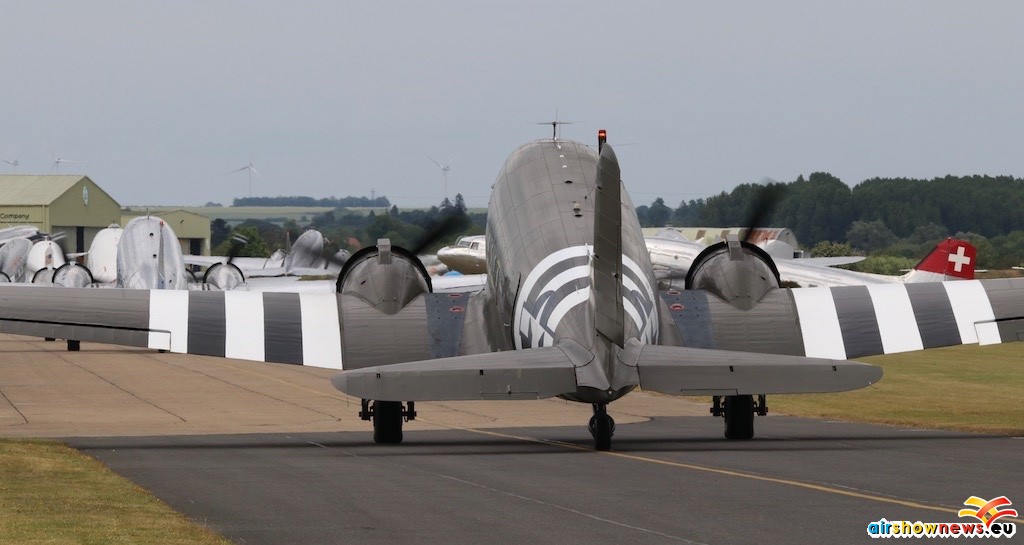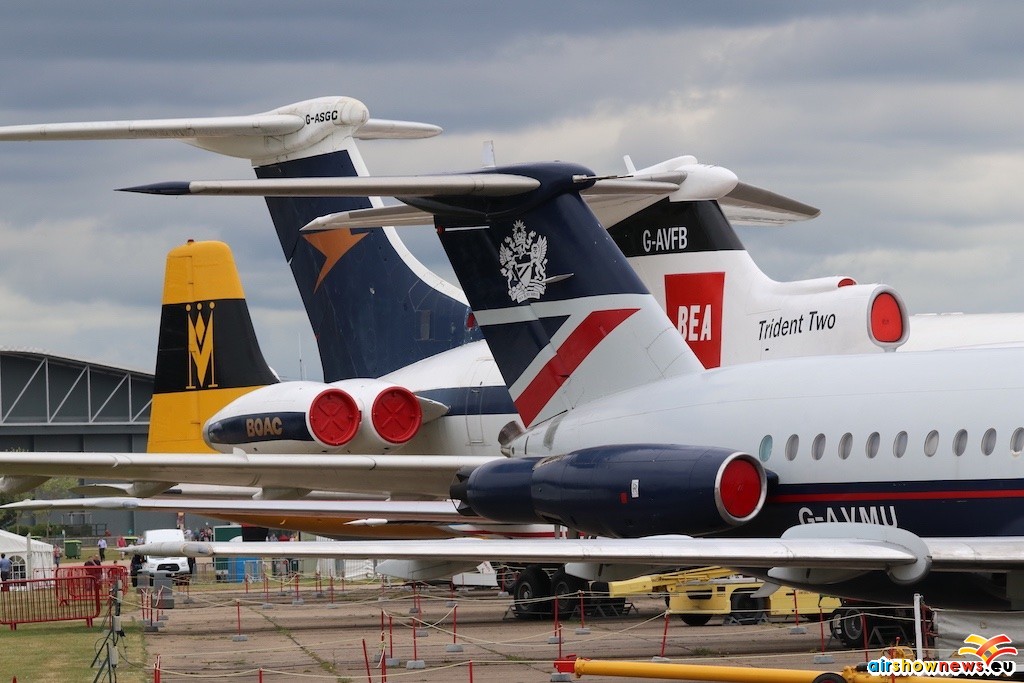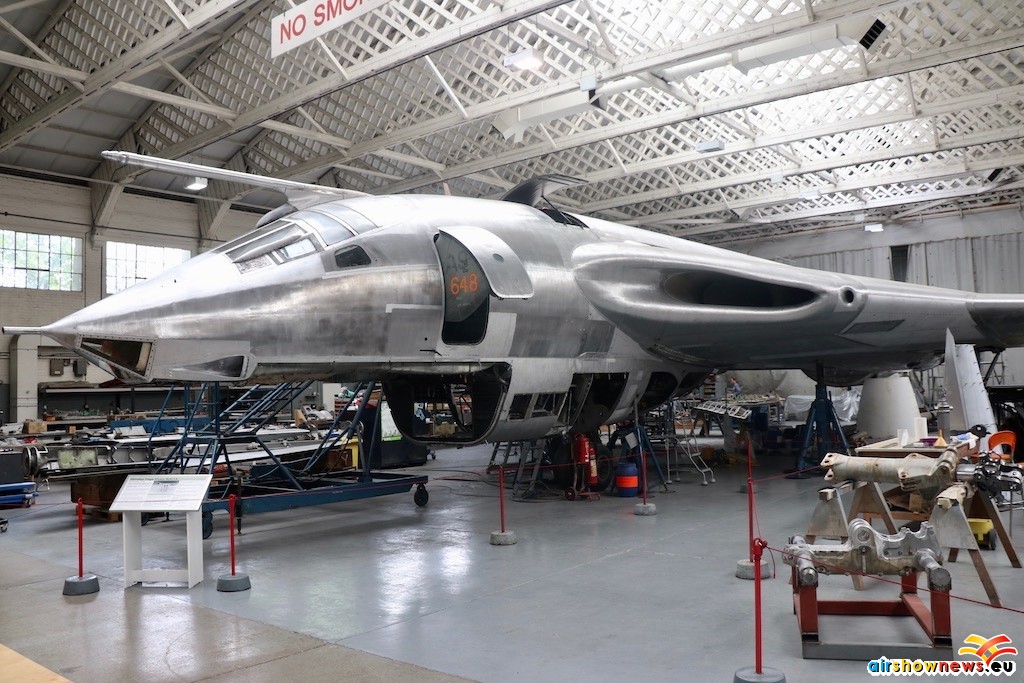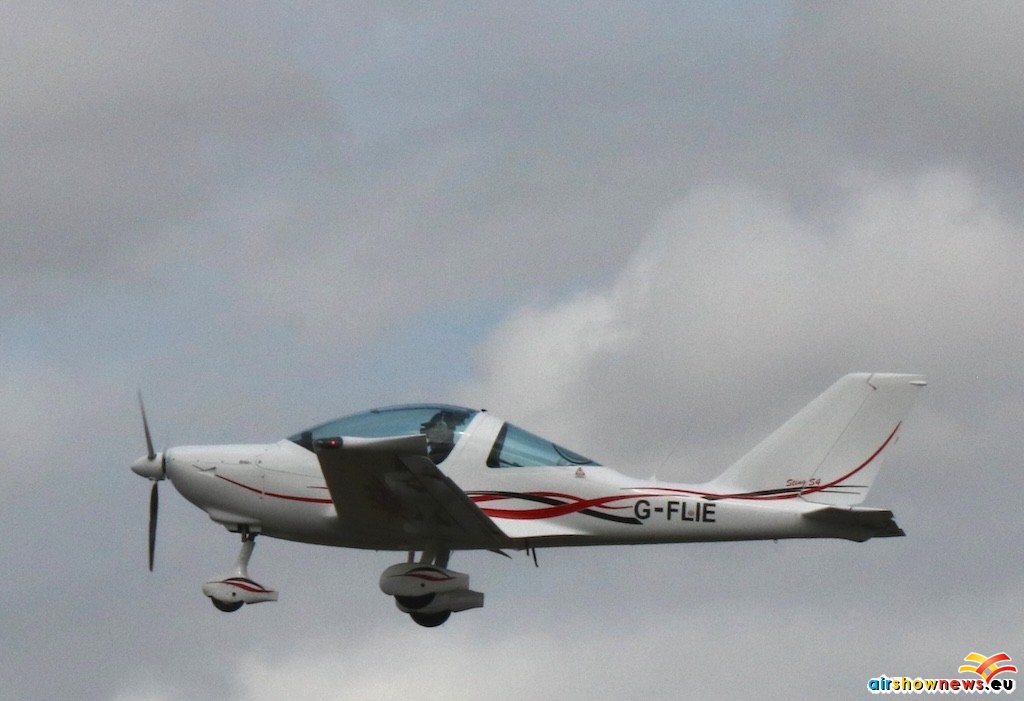Duxford, Cambridgeshire, UK 2-5th June 2019
As the home of the Imperial War Museum and Duxford Aviation Society the venue need little introduction. This rare gathering of airworthy Douglas Dakotas had been eagerly awaited as the setting off location for a re-enactment of the mass air drop of parachutists in Normandy on D-Day to commemorate the 75th Anniversary on 6th June 2019. This airborne and seaborne invasion enabling the allied powers to secure a presence on the European mainland; thereby assisting in the liberation of Europe and the end of World War Two.
Duxford airshows are normally dominated by warbirds but, from the 30th May, attention was drawn to the arrival of these Dakotas, mostly drawn from across the United States. Significant investment and considerable volunteer effort brought these crews to Europe. It is worthy of note that this month also heralds 100 years since Alcock and Brown conquered the Atlantic non-stop. The Dakotas generally routed through Newfoundland, Greenland, Iceland and Scotland; no doubt with reliable radios and GPS positioning compared to that Vickers Vimy though I imagine today’s health and safety culture added considerably to the workload.
Once the stream of American Dakotas, drawn from all parts of the country, arrived at Duxford, between the 28th May and 2nd June, they were joined by a selection of European examples, notably from Scandinavia. A solitary Lisonov Li-2 joined them from Hungary though two promised Russian based examples failed to appear. Most of the Dakotas sported period colour schemes and the distinctive invasion stripes. Others included civilian ‘retro’ liveries like Pan Am or SAS and more recent military colours like the Royal Danish Air Force or the United States Air Force of the 1960s.
An early attempt to scout out the route from Duxford to Normandy was restricted by weather but, as the weather improved, small groups of Dakotas blazed the trail at least as far as Eastbourne on the British south coast, partly to evaluate the easterly route around the busy London zone. Some of these Dakotas then overflew historic airfields as they routed back to Duxford or made visits to airfields like Cambridge or Old Warden; home of the Shuttleworth Collection that hold flyable examples from the earlier World War.
The ‘official’ public days were the 4th and 5th June so Duxford put on a grand spectacle with Rapides and Tiger Moths providing pleasure flights and Mustangs and Spitfires mixing with the regular T-6 trainers. Other based warbirds ensured the eyes and ears of the thousands of visitors never forgot the period being commemorated. Even the Mildenhall base nearby contributed a mass flypast of Hercules and Ospreys with personnel providing some welcome hospitality for their American visitors.
Wednesday marked ‘departure day’ for the parachute drop. Mid-afternoon saw a dozen Dakotas filled with airmen in period uniforms carrying original style round canopy chutes boarding their steeds and a stream take-off for Caen. These were followed by all but two of the remaining Dakotas who helped fill the skies over Normandy that afternoon; again a route over early garrison towns and airfields ensured that much of south-east England was treated to the sound of Daks in the air. Nostalgia rules. The 6th then saw various national leaders honour the memory of all those involved in and around the beaches and military cemeteries of north-west France where such places are still treated with reverence despite the heavy price paid enabling the allied advance to succeed. With only a small number of original participants still able to describe their experiences it is unlikely such a mass gathering will be repeated.
Duxford of course put on a fine show; all the Museum hangars were open and well presented, the airliner collection of the Duxford Aviation Society is unique and looks more ‘polished’ every year. Restoration of both static and airworthy aircraft continues apace showing what can be achieved when enthusiasm and expertise come together. A recent project being the refurbishment of the Handley Page Victor; now there is a task and a half!
Congratulations are due to the Daks organisation, the IWM, British Legion and Commonwealth War Graves Commission for showing what can be achieved when allied democracies all pull together.


